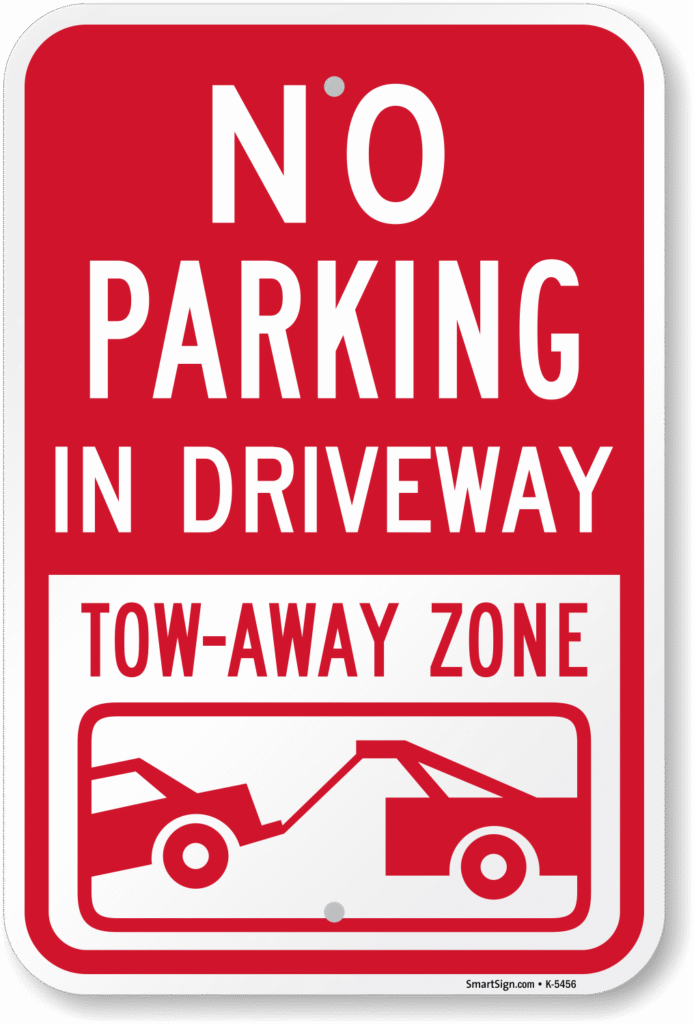
Tired of finding strangers parked in front of your house, blocking your driveway or hindering your neighbors? A no parking sign can be a simple yet effective solution to reclaim your curb space. These signs act as a clear deterrent, letting drivers know that parking in a particular area is prohibited.
This article will guide you through the process of obtaining a no parking sign in front of house. We’ll explore the different types of signs available, the reasons why you might need one, and the steps involved in getting it installed. From understanding local regulations to navigating the application process, we’ll cover everything you need to know to successfully secure a no parking sign for your property.
No Parking Signs
No parking signs are typically rectangular in shape and feature bold, easily readable lettering indicating that parking is prohibited. They often come in standard colors like white with black lettering or red with white lettering, making them highly visible to drivers.
These signs can be further customized with additional information, such as the specific time restrictions or the reason for the parking ban. For example, a sign might indicate “No Parking 2-6 PM” or “No Parking Fire Lane.”
The specific design and wording of a no parking sign may vary depending on local regulations and the jurisdiction where it is installed.
Preventing Unwanted Parking

There are several reasons why you might want to consider getting a no parking sign put up.
Perhaps you have a narrow driveway and need to ensure that your vehicle can easily enter and exit. Or maybe you live on a busy street where people often park illegally, blocking your access or creating a safety hazard.
No parking signs can also be helpful for preventing overnight parking, which can be disruptive to residents or create security concerns.
By clearly indicating that parking is prohibited, these signs can deter unwanted vehicles and help maintain order and safety in your neighborhood.
Local Regulations
Before you apply for a no parking sign, it’s crucial to understand the local regulations governing their use.
Contact your local municipality or homeowner’s association to inquire about their specific rules and requirements. They can provide information on the types of signs permitted, the areas where they can be placed, and any necessary permits or fees.
Some municipalities may have specific criteria for granting no parking sign requests, such as demonstrating a genuine need or obtaining support from neighboring residents.
Application Process

The application process for a no parking sign typically involves submitting a written request to the relevant authority.
Be prepared to provide details about your property, including the address and a description of the area where you need the sign. You’ll also need to explain the reasons for your request, such as driveway access issues or safety concerns.
In some cases, you may need to provide supporting documentation, such as photographs or letters from neighbors.
Once your application is received, it will be reviewed by the municipality or homeowner’s association. They may conduct an on-site inspection to assess the situation and determine if a no parking sign is warranted.
Sign Installation
If your application is approved, the municipality or homeowner’s association will typically handle the installation of the no parking sign.
They will determine the most appropriate location for the sign, ensuring it is clearly visible to drivers and complies with local regulations.
The installation process may involve attaching the sign to a pole or mounting it on a wall.
Once installed, the no parking sign will serve as a clear indication that parking is prohibited in that area.
Conclusion
Securing a no parking sign can be a valuable step in protecting your property and ensuring the safety and convenience of your household. By understanding local regulations, navigating the application process, and working with your municipality or homeowner’s association, you can successfully obtain a no parking sign and reclaim your curb space. Remember to be clear and concise in your request, provide all necessary documentation, and be patient throughout the process. With a little effort, you can enjoy the peace of mind that comes with knowing that unwanted vehicles are less likely to park in front of your house.
